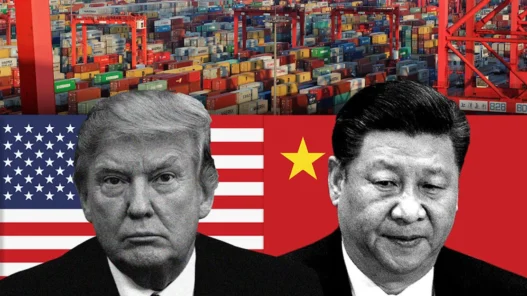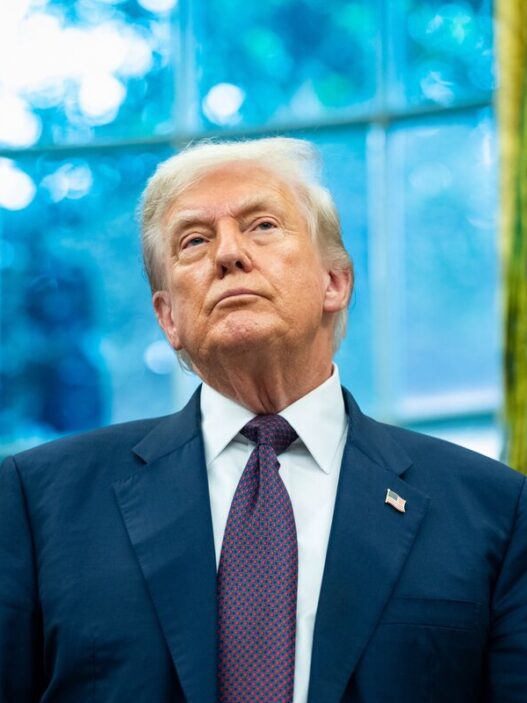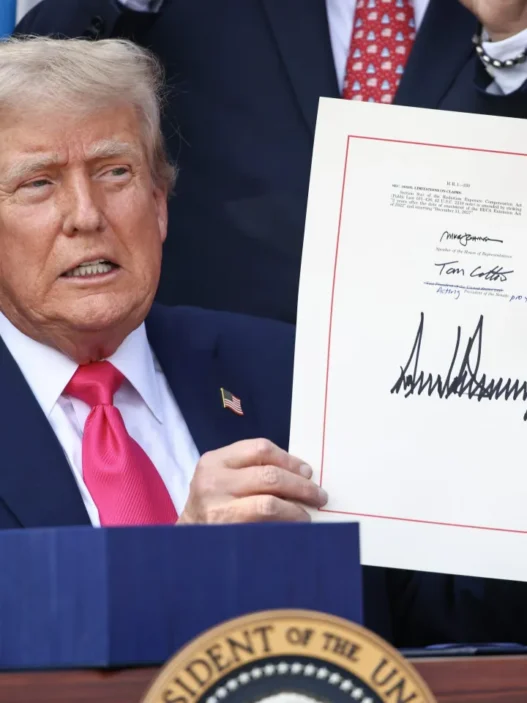China has signaled a firm stance in the face of renewed trade tensions, declaring it is “not afraid” of a potential tariff war following U.S. President Donald Trump’s threat to impose 100% tariffs on Chinese goods. The announcement highlights Beijing’s readiness to respond to aggressive trade measures and underscores the ongoing fragility of U.S.-China economic relations, which remain among the most consequential in the global economy.
According to Chinese officials, any U.S.-imposed tariffs of this magnitude would trigger retaliatory measures that could target key U.S. sectors such as agriculture, technology, and energy. The country’s leaders maintain that China’s economy is resilient enough to withstand external shocks, relying on both domestic consumption and diversified global trade relationships.
The Context: Trump’s Threat and Its Implications
Donald Trump’s proposal for a 100% tariff on Chinese imports represents the most aggressive trade action in decades. If implemented, it would effectively double the cost of Chinese goods entering the U.S., disrupting supply chains, raising consumer prices, and escalating tensions between the world’s two largest economies.
Key implications include:
- Impact on U.S. consumers: Prices for electronics, household goods, and clothing could rise sharply.
- Impact on U.S. companies: Firms reliant on Chinese supply chains may face higher production costs.
- Global economic uncertainty: A major escalation could ripple through international markets, affecting trade partners worldwide.
Despite these threats, China has maintained a calm and assertive posture, indicating that such tariffs would not intimidate Beijing.
China’s Strategic Response
Chinese officials have outlined several approaches to counter potential U.S. tariff escalation:
- Tariff Retaliation: Beijing could impose tariffs on U.S. exports, particularly in agriculture (soybeans, corn, pork) and industrial goods.
- Diversification of Trade Partners: China is actively expanding trade relationships with Europe, Southeast Asia, and Africa, reducing reliance on the U.S. market.
- Domestic Economic Strengthening: Policies aimed at boosting domestic consumption, infrastructure investment, and technological self-reliance are designed to insulate China from external shocks.
- Legal and Diplomatic Channels: China may pursue World Trade Organization (WTO) disputes or negotiate directly with U.S. authorities to prevent extreme tariffs.
A senior Chinese trade official remarked, “We are fully prepared to protect our economy and the interests of our businesses. Unilateral tariffs will not coerce China into submission.”
Global Economic Ramifications
Markets have already reacted to the rhetoric, with volatility in equities, commodities, and currency markets. Analysts warn that a full-scale tariff war could:
- Disrupt global supply chains spanning electronics, automotive, and consumer goods.
- Inflate commodity prices, particularly metals, oil, and agricultural products.
- Undermine investor confidence, slowing global economic growth projections.
In 2018–2019, similar trade disputes between the U.S. and China resulted in billions in lost trade revenue, forced renegotiations, and heightened uncertainty for multinational corporations. A repeat of this scenario could have even larger implications given the expanded trade volumes in 2025.
Trump vs. Beijing: High-Stakes Posturing
Trump’s 100% tariff threat is widely viewed as a political strategy, aimed at demonstrating toughness on trade and appealing to domestic constituencies concerned with job losses and industrial decline.
China, in contrast, is taking a measured, yet firm approach:
- Publicly downplaying the threat of tariffs
- Emphasizing economic self-reliance and resilience
- Signaling readiness to retaliate if necessary
This dynamic illustrates a high-stakes standoff, where both sides are testing each other’s resolve while attempting to avoid immediate economic collapse.
Implications for U.S.-China Trade Negotiations
The threat of extreme tariffs comes at a time when U.S.-China trade negotiations are ongoing, with potential agreements still on the table regarding:
- Intellectual property protections
- Technology transfer and cybersecurity
- Agricultural purchases and market access
- Financial services and investment flows
China’s defiance could complicate negotiations, potentially forcing the U.S. to adopt more moderate measures to avoid escalation. However, it also strengthens China’s bargaining position, showing that aggressive threats may have limited influence.
Conclusion: A Trade War or a Strategic Standoff?
China’s message is clear: It is willing to weather economic pressure and protect its strategic interests, even in the face of extreme tariff threats. While the rhetoric raises the specter of a full-scale trade war, Beijing’s measured posture suggests the situation may remain a strategic standoff rather than an immediate economic conflict.
For U.S. policymakers, businesses, and global investors, the episode underscores the fragility and high stakes of U.S.-China economic relations. Any misstep could trigger disruptions in trade, supply chains, and financial markets, reinforcing the importance of careful negotiation and calibrated diplomacy.
Brad Bessent, trade analyst and farmer, commented, “China’s resilience should not be underestimated. Tariff threats are not just economic tools—they are political signals, and Beijing knows how to respond without panic.”






















